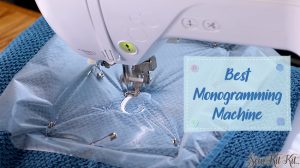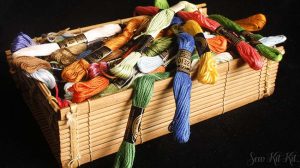Last Updated on January 10, 2023
The embroidery stabilizer is a key to a successful embroidery. By choosing the Best Embroidery Stabilizer your experience will be more pleasant.
When you buy through links on our site, we may earn an affiliate commission. As an Amazon Associate I earn from qualifying purchases.
You must be thinking that an embroidery stabilizer is just a tool that will help you to stabilize the fabric. But knowing only this is not enough, there is obviously a lot to know before you click the purchase button or head to the market with a wad of cash in pocket. Obviously, you must know which one is going to be the Best Embroidery Stabilizer for you.
Stabilizers make smooth machine embroidery, but it won’t work if the fabric is not suited for that very kind of stabilizer. So, matching stabilizer to fabric is the key. For best results, you need to keep several types and products on hand and make test samples permanently stitching out a design.
You must know if the product does what it says. No seller will show you the cons, they just show the prons and keep the cons hidden. Moreover, you won’t be able to see the physical products, so you must rely on the experiences of other buyers. Getting the experience of other buyers will help lead your shopping decision to a better place. We exactly do this. So, by reading our review, you can make sure that you are putting the right products into your carts.
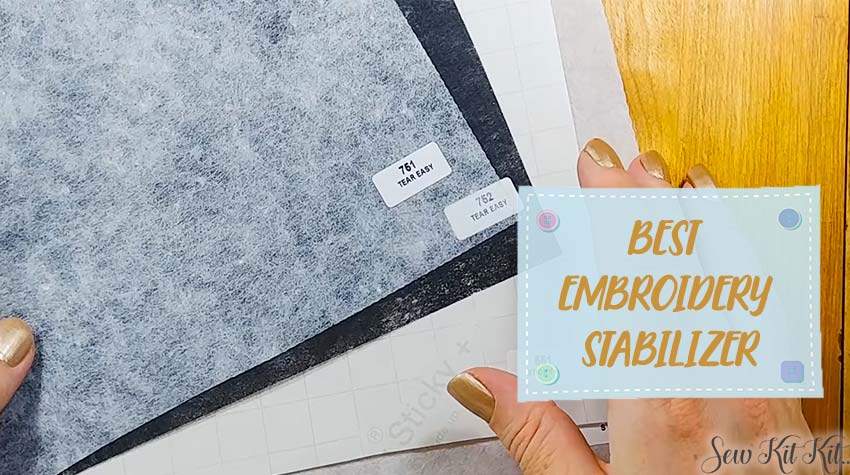
The 5 Best Embroidery Stabilizers
| Image | Title | Buy |
|---|---|---|
 Top
Top | Tear Away Machine Embroidery Stabilizer Backing 100 Precut Sheets 8"x8" Medium Weight 1.8 Ounce Fits 4x4 Hoops | Check Price! |
 Top
Top | No-Show Poly-Mesh Plus Machine Embroidery Stabilizer Backing Cut Away 20" x 10 Yards Roll | Check Price! |
 Top
Top | Cut Away Embroidery Stabilizer 12” x 50 Yard Roll – 2.5 Ounce Cutaway for Machine Embroidery | Check Price! |
 Top
Top | Wash-Away - Water Soluble Embroidery Stabilizer & Topping! 100 Precut Sheets - 7"x7" | Check Price! |
 Top
Top | H2O Eau Gone White FSL 12 inch x 10 Yard Roll. Wash n Gone - Wash Away - SuperStable Embroidery Stabilizer Backing | Check Price! |
1. Tear Away Machine Embroidery Stabilizer
- High Quality Medium Weight 1.8oz
- Fits 4x4 embroidery hoops
- 100 8x8 precut sheets
- Tears easy in either direction
It has some special features which make it identical and easy to use.
Easy Removal: This is not the sticky kind of stabilizer. So this doesn’t stick on to the fabric while you embroider. It removes very easily.
Keep your stitches in place: It will not stress your stitches as it is removed. Your stitches will be in place if you use this one.
Weight: It is not weighty. It adds very little weight to your project so won’t make you feel it heavier.
Either side usage: It has no right or wrong side. You can use it on either side.
You can use this stabilizer for use with machine embroidery which can have thousands of stitches in just a few square inches.
The problem that you may face is that it is not an iron-on stabilizer. It may loosen up your stitches when you tear them away.
So when you wish to remove most of the excess stabilizer from the back of the project after embroidery, you must use this one. Again, you can use them on all fabrics with the exception of stretchy fabric or knits, or very sheer fabrics. If you are using natural fibers and thicker, softer fabrics that are more likely to relax around the stitching and lie flatter after embroidery, a tear-away stabilizer is something that you are looking for.
2. No-Show Poly-Mesh Plus Machine Embroidery Stabilizer
- 1.5 oz Medium Weight Cut Away Embroidery Stabilizer Backing
- Soft,Sheer,Stable and Translucent Premium Stabilizer
- High Quality White Color Backing
- 20 Inches by 10 Yard R
If you are looking for a single-layer application, then this one is an exciting new embroidery solution. It features the most stable polymers.
Sectors to use: You can use it in sewing, crafting, and embroidering. It is light and flexible and it doesn’t tear.
Easy to wash: You can wash and dry it. You will not have any problem using it in laundered pieces.
Weight: It is perfect for sheer fabrics as it is Soft, Sheer, and Translucent. It is very light and soft. It has great strength and durability. It doesn’t bunch.
This no-show poly mesh works well for any type of embroidery where you don’t need a tear-away product. It doesn’t make the embroidery item feel thick and comes in a variety of sizes. It won’t make you feel itchy on the backside if you use it on a clothing item.
It is not iron on.
It minimizes stabilizer show-through on light-colored fabrics as it is high-quality white color backing.
So, if your consideration is soft, you must try it.
3. Cut Away Embroidery Stabilizer
- Value Stabilizer
- 2.5 oz. Medium weight cut away
- Adds great stability
- Used by national and global apparel bra
Cut Away stabilizers are considered the most stable of the various stabilizer types.
Stability: It adds great stability. The stabilizer behind the stitches will be there for the lifetime of the garment and will prevent the design’s stitches from popping as the garment is stretched or manipulated.
Sectors to use: It is great for use with baby items or children’s clothing, and lightweight stretchy fabrics. It is great for t-shirts and jackets.
There is no sticky stuff on it. This stabilizer isn’t iron on.
So, you can use it on any fabric type, but I would like to suggest that you MUST use it when stitching on knits or stretchy fabrics.
The fact that you won’t like is that you may find it heavy and it wrinkles badly. So you may find it hard to work with.
4. Wash-Away Water-Soluble Stabilizer
- 100 Precut Sheets - 7x7
- Great for use on top of towels
- Dissolves in both hot & cold water
- Lightweight and Embos
You should use Wash Away Water-Soluble Stabilizer when all traces of the stabilizer need to be removed from the back of the project, such as when using a sheer fabric or embroidering a project that will be seen from the backside as well as the front side.
Sectors to use: It is used on top of a high-profile fabric to hold down its nap, or pile. It is very popular on towels and polaron sweaters, fleece, towels, and other soft knits. This product works great when stitching on fluffy towels, thin scarves, t-shirts, etc. when you need the thread to sit on top of the fabric. It feels flimsy but is super strong when/where it needs to be in the hoop.
Easy Removal: It is easily removed from the completed embroidery design using a spray bottle of water.
It puts a layer between the fabric and your stitches. It is ideal to leave your stitches on top of your garment.
So if you’re embroidering and you don’t want the stabilizer to show, even on the wrong side, then your best choice for backing is a wash-away stabilizer. If you are using delicate, mesh-like, and difficult-to-mark and also for cutwork, I’ll suggest you use Wash-away stabilizers.
One tip that I would like to give you while using this item that doesn’t make your fabric too stiff, because it can become brittle and crack when stitched.
5. H2O Eau Gone White FSL
- This stabilizer is a complete washaway stabilizer, leaving no residu. It is a fibrous washaway stabilizer for free standing lace, fleece and pashmina. It dissolves easily in tap water leading to a far tighter definition, while being less messy than film stabilizers, as fibers hold stitches. Also , in humid climates, film stabilizers will sag leading to the loss of hooping tension and leading to a loss in definition. Made with 100% PVA ( Poly vinyl alcohol)
- Made in USA.
- Ideal for FSL Free standing lace.
- Completely dissolves.
- Wash n go
It is a wash and goes – Wash Away – super Stable Embroidery Stabilizer.
Easy Removal: This stabilizer is a complete wash-away stabilizer, leaving no residue. It dissolves easily in tap water leading to the far tighter definition. It’s water suable or washes away used with lace or freestanding projects.
Cleanliness: As fibers hold stitches, it is less messy. It is very firm for dense stitching and then rinses out easily.
Sectors to use: It works great for stabilizing towels, velour, sweatshirts so the threads don’t sink into the fabric.
So, if you dare to try new products, you must try it as it is said that this stabilizer is made by using the latest technology.
What is an Embroidery Stabilizer?
Just exactly what the name says an embroidery stabilizer stabilizes the fabric. You’ll place it underneath the fabric which you are going to embroider and it’ll hoop together with the fabric. It will keep your fabric from moving, puckering, or stretching during the embroidery process. It will also help your embroidery looking good. Another feature that it’ll give you that your stitches will be in place even after washing or wearing the item.
So if you want a smooth fabric, without any puckers, gapping problems, and outlines, an embroidery stabilizer is a must.
Have you ever thought that there are six different types of embroidery stabilizers? Yes, there is. So, which one is favorable for you? Let’s find out.
As it is widely used, there are the number and variety of new or improved stabilizers continues to grow, but there are six basic types of stabilizers to choose from. They are:
- Tear Away Machine Embroidery Stabilizer
- World Winder Tear Away Machine Embroidery Stabilizer
- No- Show Poly-Mesh Plus Machine Embroidery Stabilizer
- Cut Away Embroidery Stabilizer
- Wash-Away Water Soluble Stabilizer
- H2O Eau Gone White FSL
I’m providing a brief description of which one should you use for your purpose.
Understanding The Features to Find out the Best Embroidery Stabilizer:
While buying the stabilizer, you should keep some features in your mind.
Removal: You should check whether the stabilizer is sticky or not, whether this sticks on to the fabric while you embroider or removes it very easily. So before buying the product you must check what kind of product you need, whether you want to keep the stabilizer or remove it.
Weight: Whether the product is heavy or not, will it make you feel heavier or not, you should be careful about the weight of the stabilizer.
Thickness: Before buying the product, you should know about its thickness. Whether the stabilizer is thick enough to draw on it or not, you should consider this matter.
Sectors to use: Some stabilizers are great for use with baby items or children’s clothing, some are for t-shirts and jackets, some are popular on towels or sweaters, or other soft knits. You can use them for embroidering as well as for stabilizing, sewing, crafting. So you should consider these things before buying any stabilizer.
Washable or not: You should consider what kind of stabilizer you need to buy. Is it washable or not, is it iron it or not, you should think of these too.
How to use an embroidery stabilizer?
- Step one: Spray: You need to spray the fabric with temporary adhesive to make the stabilizer stay in place. Spray on the backside of your design.
- Step two: Place the stabilizer: Place the stabilizer on the backside of the fabric. Put it in your hoop to keep it in place or sometimes you can just place it under your hoop. Make sure that it is kept nicely and smoothly. The stitches will hold it in place but you have to make sure you have it lined up well so all of your sewing areas will be covered with the stabilizer and that you are using a big enough piece so it won’t catch up in your needle.
- Step three: Use the embroidery frame: Simply place that fabric and stabilizer on the embroidery frame. Then the tightening part of the frame is anchored in place.
- Step four: Remove the stabilizer: Once your design on the fabric is done, take it out of the hoop and remove the stabilizer. For a tearaway stabilizer, you just need to pick and pull the stabilizer out. If you can’t do it easily, you can use tweezers.
For a cutaway stabilizer, simply hold your stabilizer in one hand and cut it away about a quarter of an inch or an eighth of an inch all around the design.
To wash away, run some warm water on it and gently scrub it with your fingers. They dissolve when they get wet.
FAQ:
When do I use a tear-away stabilizer for machine embroidery?
It all depends on the type of fabric and the type of embroidery design. But when you wish to remove most of the excess stabilizer from the back of the project after embroidery, you should use it.
How does tear-away attach to the fabric? Is it sticky back or iron-on?
It is not sticky nor is it iron-on: (but if you iron it where you want it to go it stay, and is so easy to use. And easy to tear away)
Can you print on the tear-away stabilizer with a printer?
You could print on it if you cut it down to the right size to fit the printer.
What would be the best to get for t-shirts?
A cut-away stabilizer is best suited for t-shirts.
How does the cutaway stabilizer wash if there is an extra on the fabric?
It washes well with no problem.
Do you need 2 layers for FSL?
You should use 2 layers, hooping them at 45-degree angles, for stability.
Does Wash-Away Water Soluble Stabilizer work well on cotton?
Yes, this will cover any fabric you want to embroider, including knits like beanies. You can use it on burlap, towels, fleece, etc.
Conclusion
So to keep your fabric from moving, puckering, or stretching during the embroidery process, to help your embroidery looking good, to keep your stitches in place even after washing or wearing the item, you must use the “Best Embroidery Stabilizers”. Of course the stabilizer you’ll choose will depend on your fabric and the end-use but still consider the above facts while buying them.
I hope this article has clarified many of your stabilizer questions.

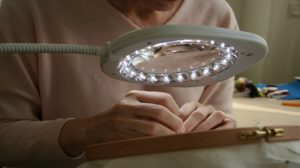
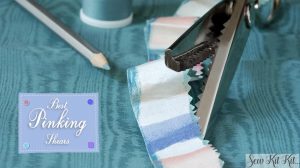
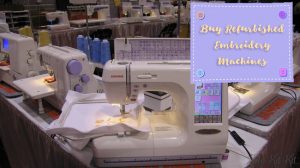
![Read more about the article Embroidery VS Screen Printing – Which is Better? [2023 Guide]](https://www.sewkitkit.com/wp-content/uploads/2018/05/Embroidery-Versus-Screen-Printing-300x168.jpg)
